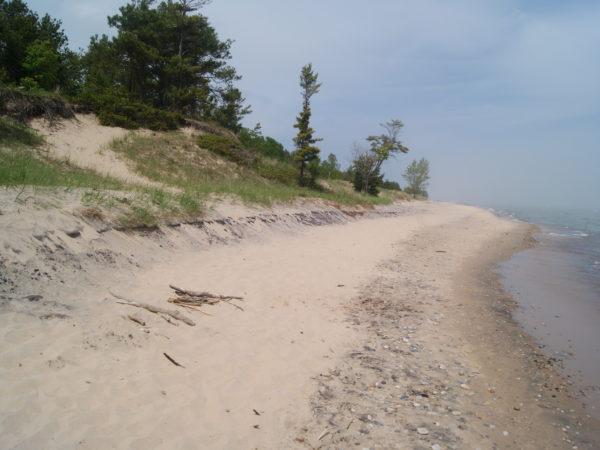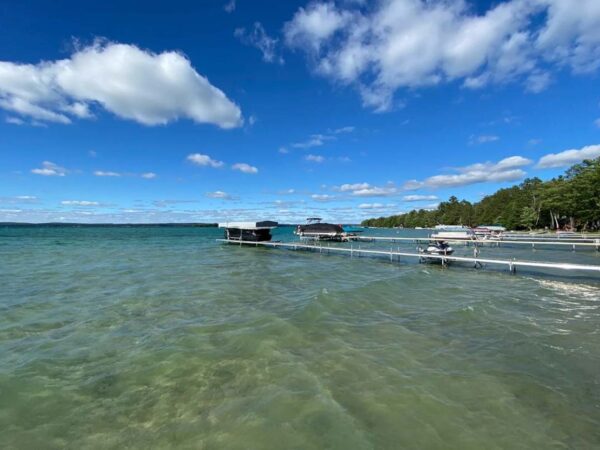
By
The Great Lakes News Collaborative includes Bridge Michigan; Circle of Blue; Great Lakes Now at Detroit Public Television; Michigan Public, Michigan’s NPR News Leader; and who work together to bring audiences news and information about the impact of climate change, pollution, and aging infrastructure on the Great Lakes and drinking water. This independent journalism is supported by the Charles Stewart Mott Foundation. Find all the work HERE.
It’s springtime, which means migration and spawning for many Lake Ontario fish — and a good time to share the fascinating story of how many salmon and trout came to live in this Great Lake in the first place. Brook trout and Atlantic salmon are native to the lake, but in 1873, the federal government began stocking it with non-native salmonids — a large family of ray-finned, carnivorous fish — starting with chinook salmon. Coho salmon, steelhead, and brown trout soon followed.
They didn’t thrive at first, though. Dams impeded spawning migrations, pollution from lumber mills and tanneries degraded water quality and clearing forests for urbanization and agriculture warmed waters. This limited natural reproduction of stocked non-native species. It was also devastating for native species: combined with overharvesting, environmental harm caused the decline of some, like brook trout, and the wholesale loss of others, like Atlantic salmon.
Stocking resumed in the late 1960s as environmental awareness increased and stream quality improved, culminating in Ontario, Quebec and a number of U.S. states signing the Great Lakes Water Quality Agreement in 1972. By the 2000s all introduced species were reproducing naturally. Now, most of these fish are from the wild, not hatchery-raised — over half the lake’s chinook and coho salmon are wild, and some streams have entirely wild runs. Last fall, approximately 20,000 wild chinook and coho salmon, along with some wild brown trout and steelhead, returned to the Ganaraska River in Northumberland County to spawn. While these fish aren’t native to Lake Ontario, they’re now an important part of the ecosystem, bringing lake-derived nutrients upstream.
The fact that these fish are wild-reproducing and self-sustaining is an incredible success story. But it’s often overlooked by anglers and the public and ignored by government agencies on both sides of the border. Many streams could support even more wild reproduction, but agency policies favour putting money towards stocking non-native fish for anglers instead of habitat restoration that would benefit struggling native fish populations and the whole ecosystem. Ontario and New York state’s shared Fish Community Objectives for Lake Ontario openly acknowledges that prioritizing food for chinook could hurt native fish: chinook salmon’s preferred food is non-native alewife, but eating alewife can reduce fertility in native salmonids.
This is ultimately short-sighted, as wild populations of both native and non-native fish are more resilient and stable than those augmented by hatcheries. And long-term habitat restoration benefits all species, including humans. This includes keeping streams connected and cool by limiting agricultural runoff, keeping vegetated buffers along streams, removing dams, planting shade trees and restoring wetlands to filter water.
It can be easy for non-anglers to forget that these fish are living nearby, hidden under the water, but they are an amazing story of adaptation and a way for people to connect with nature. If we want a future where fish continue to coexist with the 13.5 million people that live in southern Ontario, we need healthy streams and ecosystems to support all life.
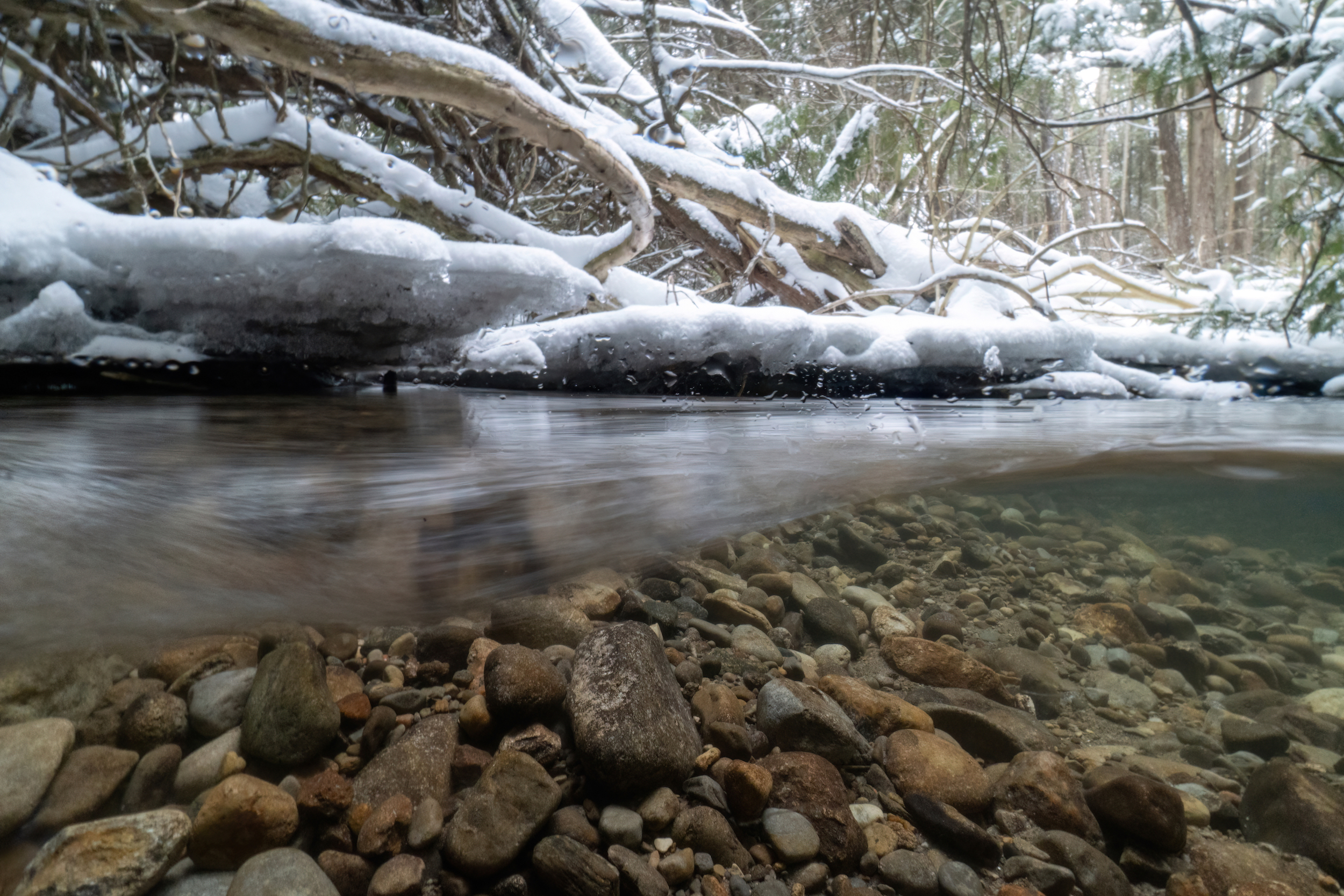
Juvenile fish use deep pools, undercut banks and rocks to shelter in the winter. Since fish are ectotherms, or cold-blooded, their body temperature is linked to the water around them. Their activity slows down in the winter. In the summer, finding cool water is essential — but only possible if habitats are connected.
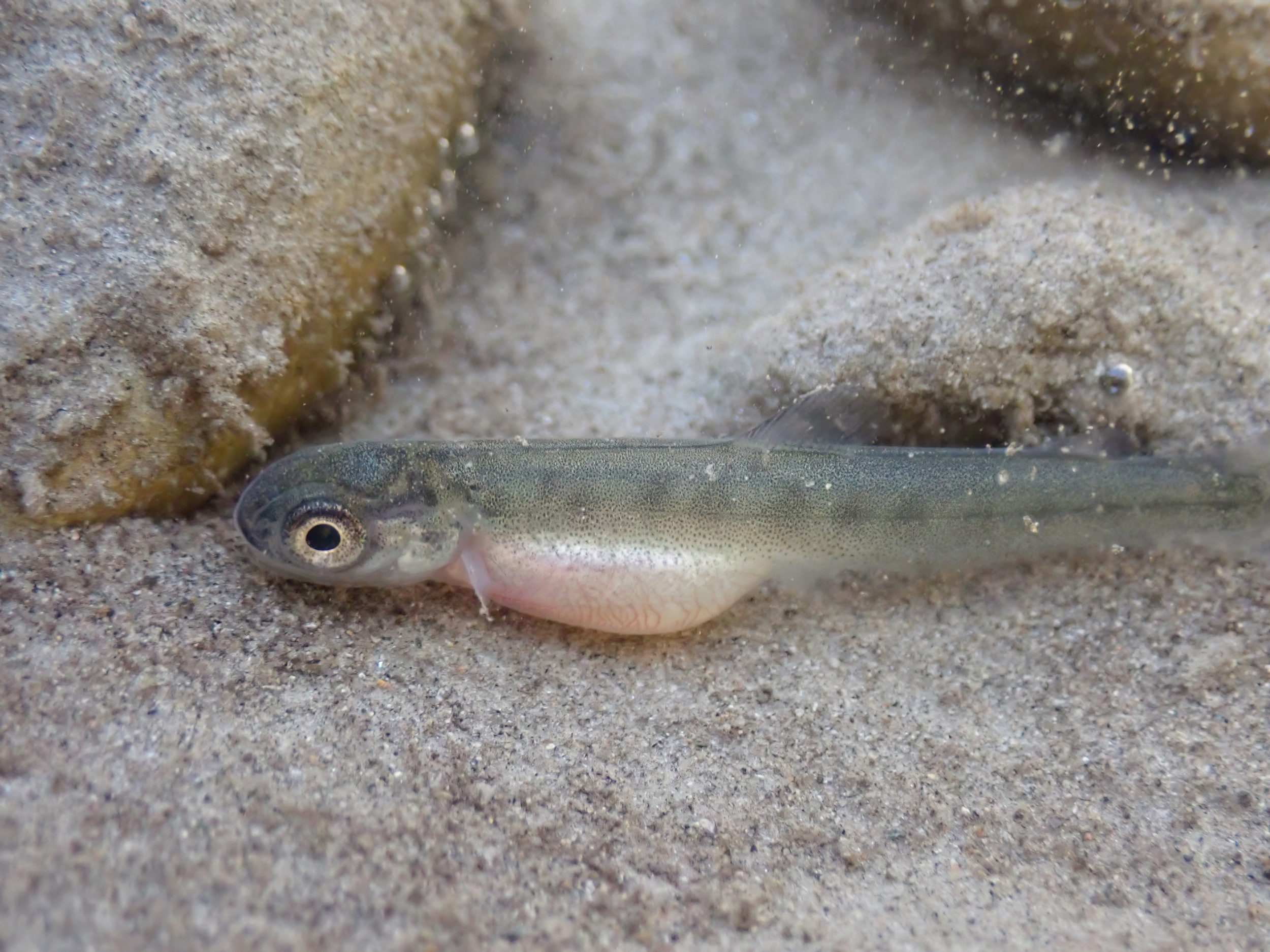
In the spring, salmonid fry emerge from the gravel. This newly emerged individual (either a Coho or Chinook Salmon) still has its yolk sac. Fry absorb their yolk sac over the first few days of life before they start to forage for prey. Picture taken spring 2021 in Cobourg Creek.

For a period of time, juvenile coho salmon are as colourful as pet store fish, with bright orange fins and mouths. They can be found in urban streams if habitat is connected and healthy.
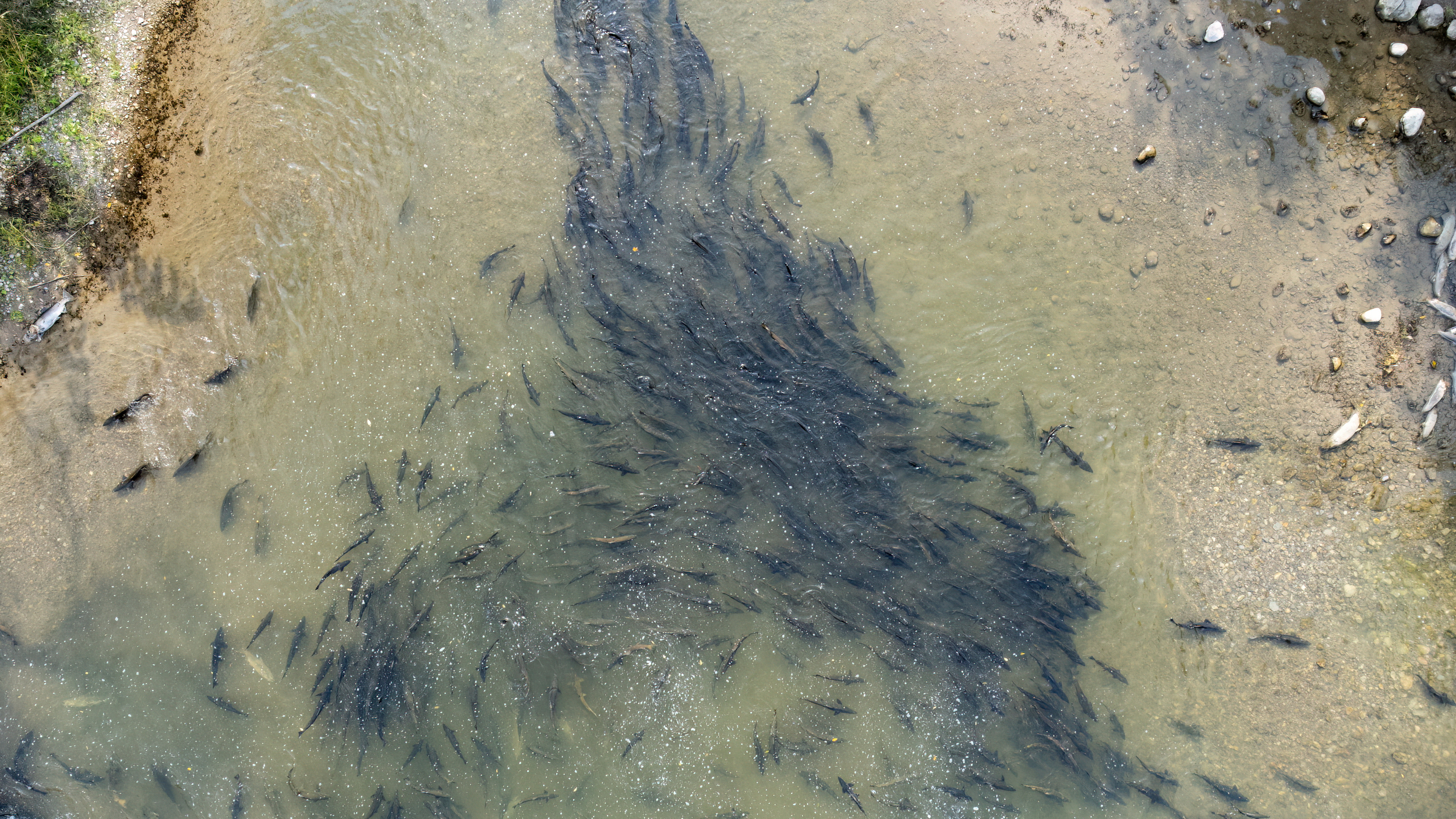
Dams slow the migration of fish. Here, chinook salmon gather below the Bowmanville Creek dam as they wait for the right conditions to ascend the fishway.
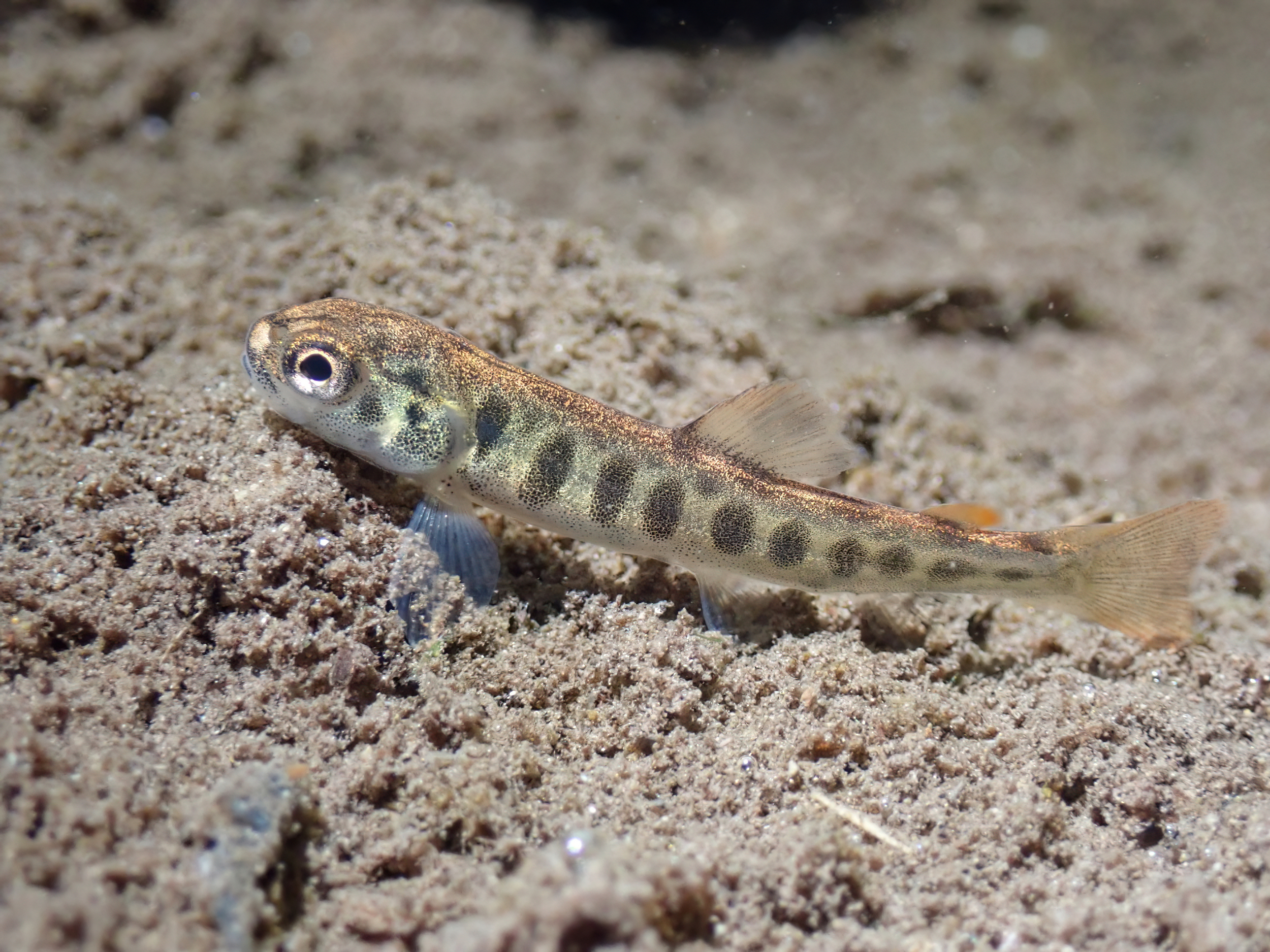
Connected habitat is important for fish at all life stages, including this young brown trout in Wilmot Creek, as it allows fish to live at their preferred temperature. Water temperature determines a fish’s body temperature, and there are often trade-offs between growth and survival in different environments.

Native freshwater Atlantic salmon disappeared over a century ago, but Lake Ontario’s streams are regularly stocked with hatchery-raised fish, like these juveniles in the Ganaraska River. Hatchery-raised fish compete with wild fish for food and reduce the ability of self-sustaining wild populations to adapt to changes in season, climate and food.
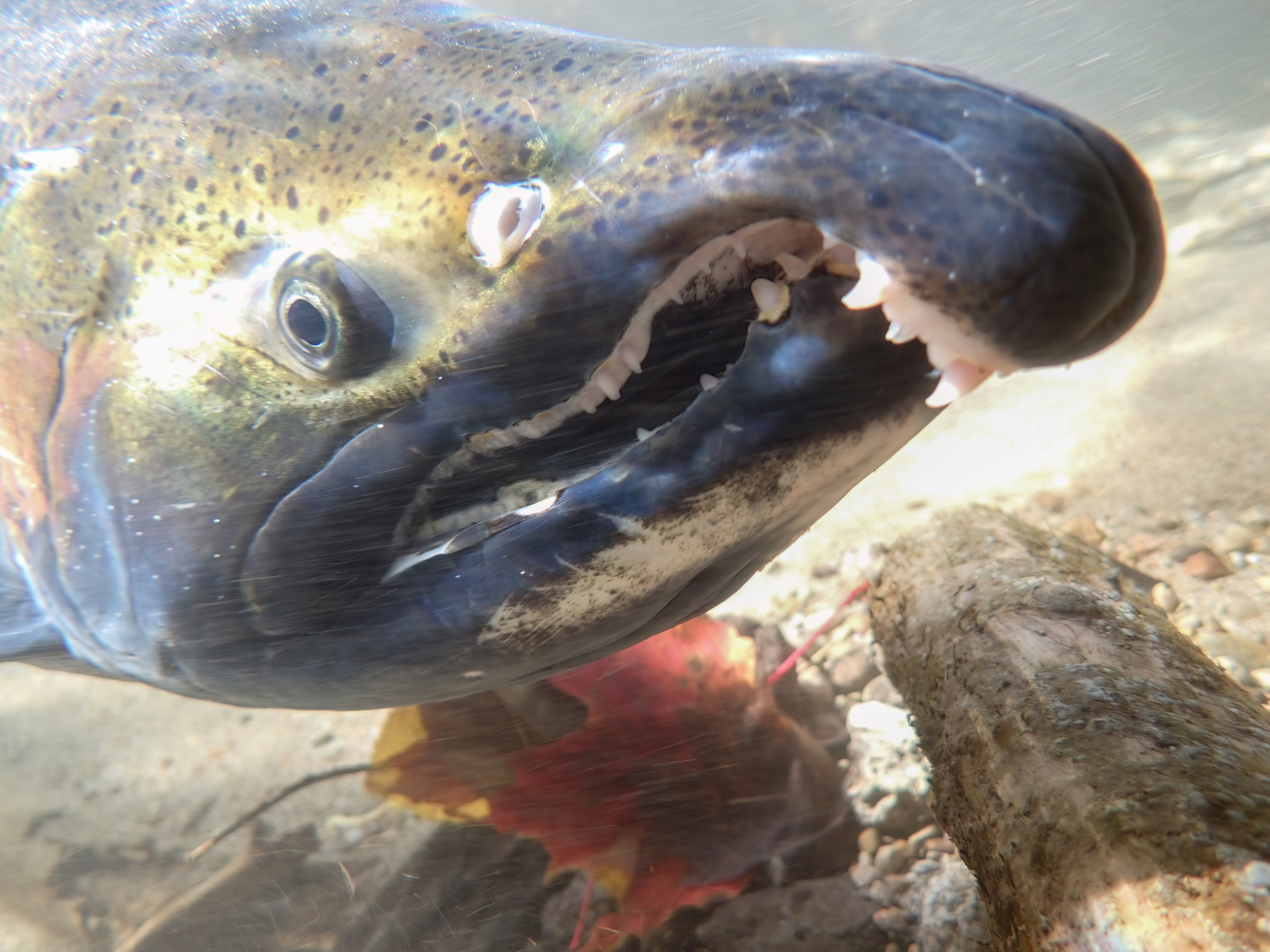
A spawning male coho salmon with a prominent hooked upper jaw and large teeth in the fall. All chinook and coho salmon die after spawning, and their bodies provide nutrients that will increase the productivity of the stream ecosystem.
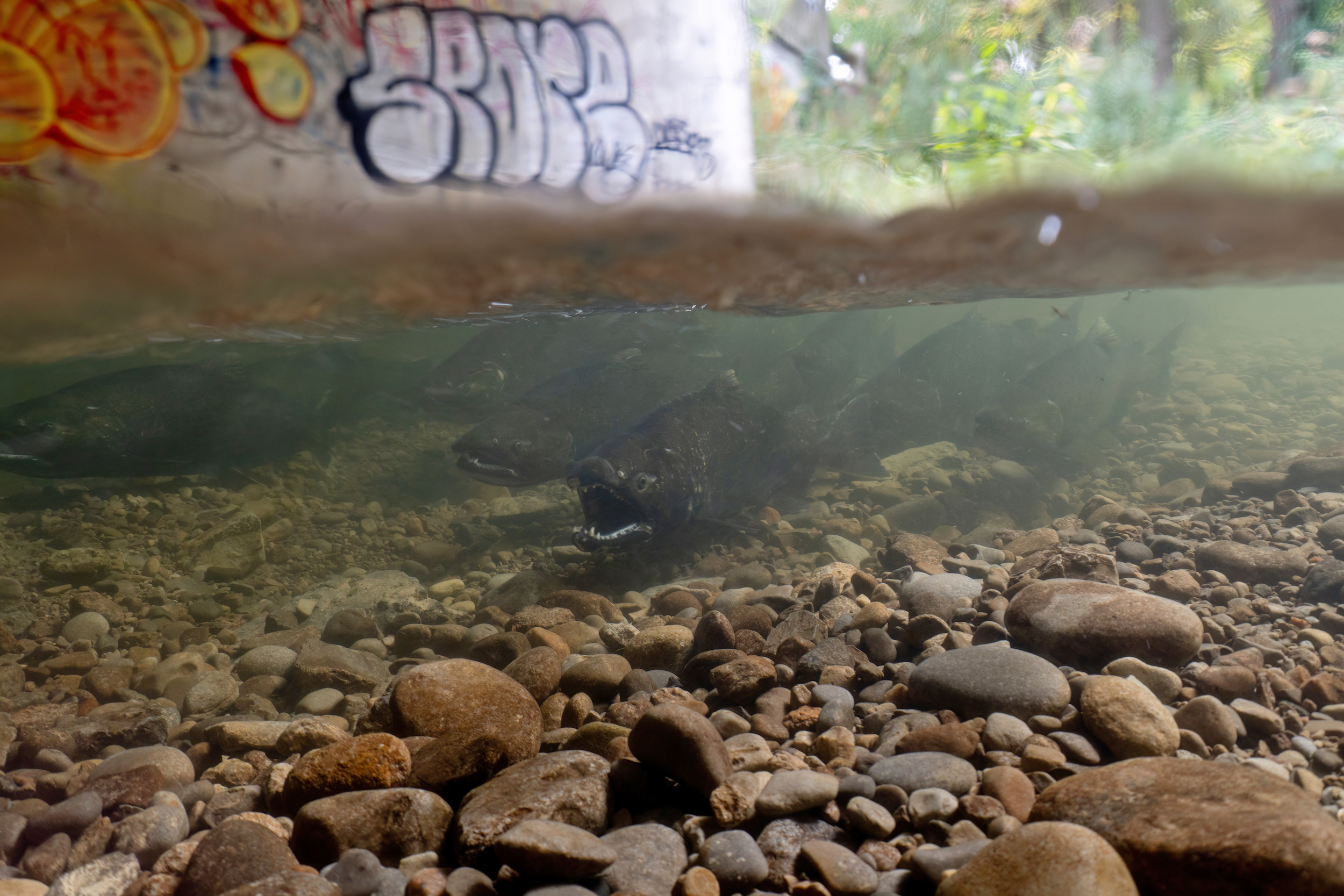
Chinook salmon rest under a bridge in downtown Cobourg, Ont. A privately-owned dam just upstream prevents these fish from travelling further. In Ontario, landowners can’t be made to remove existing dams, even if they serve no function, block fish movement, create warm and slow-moving water and reduce nutrient transfer downstream.
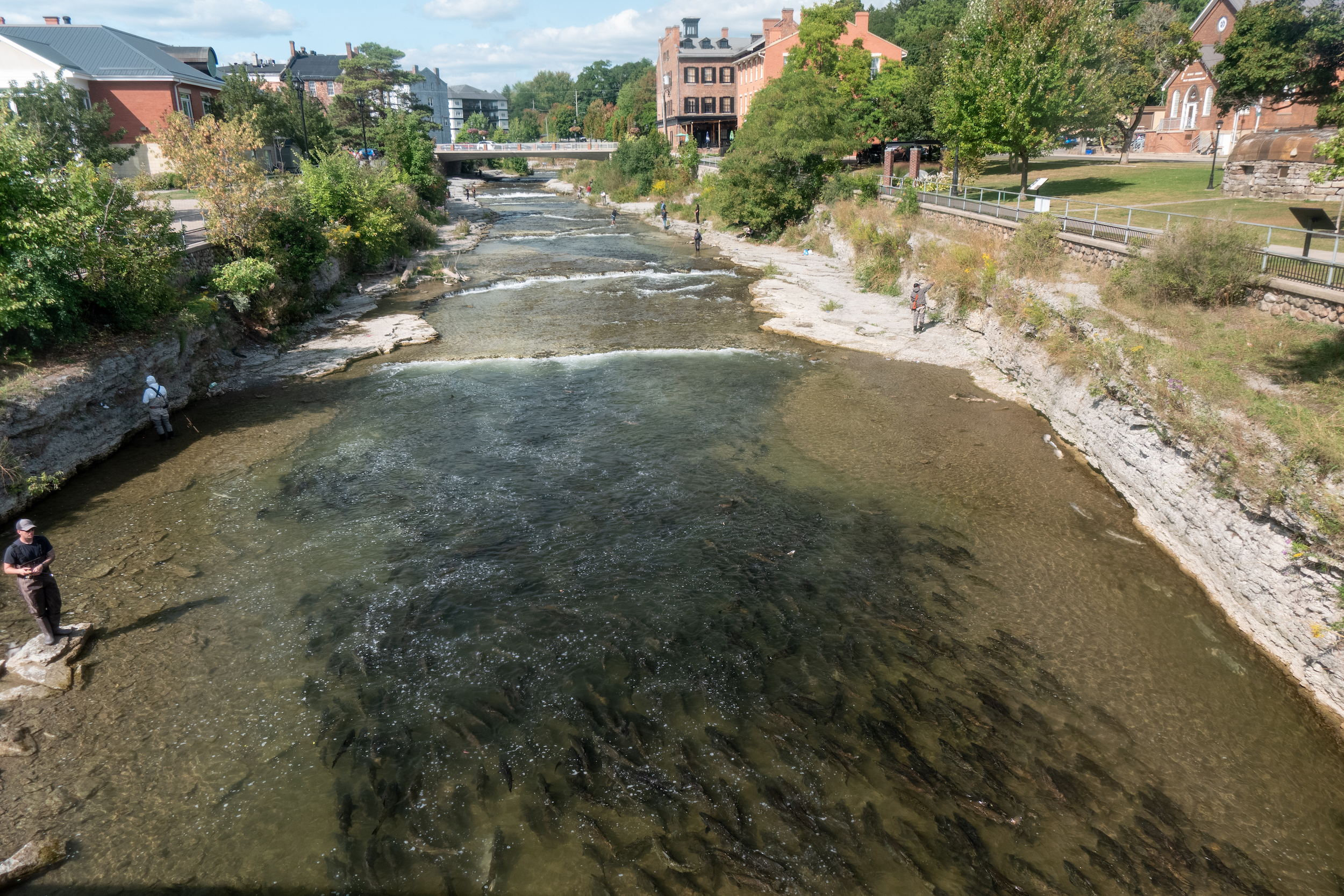
In some urban areas, such as this Ganaraska River spot with low flows over bedrock, fish are highly visible, which attracts both onlookers and anglers.
Catch more news at Great Lake Now:
‘You start with us’: Conservation authority head has parting message for Ontario government
Ontario weakens watershed protections (again) as natural resources minister gets new powers
Featured image: Young salmonids are often found in shallow water and move deeper as they get older. Woody material, like downed trees and branches, provide habitat for not just the fish, but the invertebrates they feed on.


